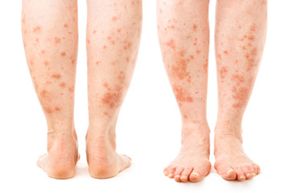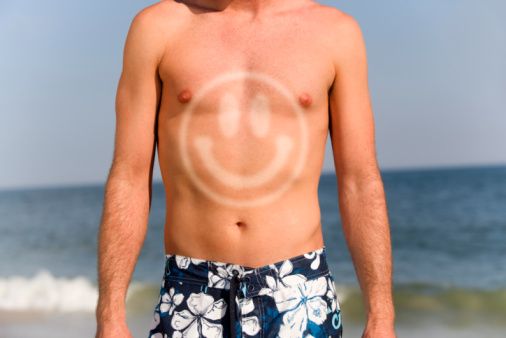Grab your sunglasses, bathing suit and sunscreen. A sunny day is an invitation to have fun and relax outdoors. For some people, though, exposure to sunlight causes urticaria (pronounced ur-tuh-KAR-ee-uh) -- another word for hives.
Hives is a common allergic reaction that causes itchy, red welts on the skin. About 20 percent of the population will experience urticaria at least once [source: Asthma and Allergy Foundation of America]. Some of the most common causes are allergic reactions to certain medications and foods (shellfish and nuts, for example), pet dander, pollen and even stress. Solar urticaria is a rare form of hives caused by an allergic reaction to sunlight.
Advertisement
If you get an itchy rash on your skin when you are out in the sun, there's a good chance it's probably something other than solar urticaria. This form of hives affects only about three in 100,000 people worldwide [source: Clinuvel Pharmaceuticals Ltd.]. Anyone can get solar urticaria, but those who are most likely to experience it are women and people younger than age 40 [source: Salford Royal].
Solar urticaria is a true allergy to sunlight. It happens when skin is exposed, even for a few minutes, to ultraviolet (UV) radiation -- rays that can't be seen and can cause damage to the eyes and skin. Sunlight, commercial tanning beds and tanning lamps all produce ultraviolet rays. When the skin of a person with solar urticaria is exposed to UV radiation, it erupts with a nasty, red rash. This happens most often in spring and summer on skin that was normally covered in the winter, such as the arms, upper chest and lower legs.
The condition's cause is still unknown, but some experts believe it might be related to a reaction from the body's immune system [source: Baron, Asthma and Allergy Foundation of America.]
The more you know about this unpleasant reaction to sunlight, the better prepared you will be to enjoy the outdoors with your family and friends. But how do you know whether you have solar urticaria? Find out by learning the symptoms on the next page.
Advertisement


